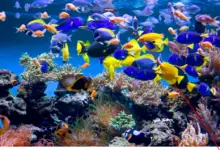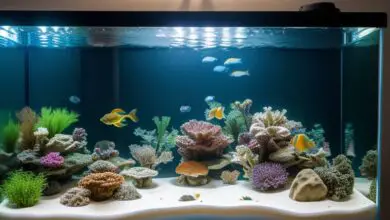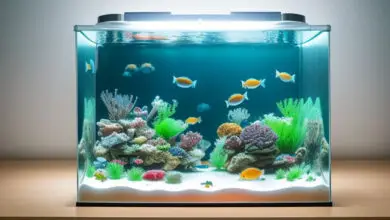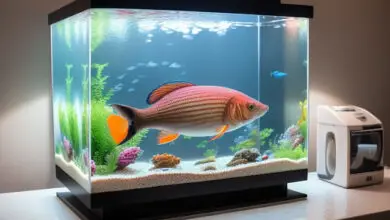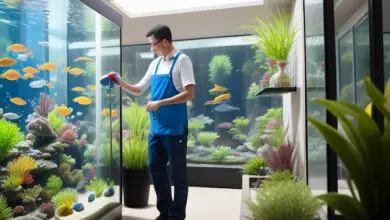The 10 Most Important Aquarium Water Measures

It is very important to understand water quality and know the ideal conditions for your fish. By monitoring and carefully controlling key water parameters, you’ll maintain a safe, comfortable home where your fish can flourish. This article explains the top 10 critical factors that every aquarist should measure and control.
Why Water Quality Matters
Fish live completely immersed in water, so its chemical makeup and attributes directly impact their health. Poor water quality stresses fish, weakens immune systems, and contributes to disease. It can even prove fatal if toxic levels occur. That’s why carefully regulating water parameters isn’t just recommended – it’s absolutely crucial for successful fish-keeping!
1. Temperature – The Water Thermometer
Water temperature dramatically influences fish metabolism, feeding, respiration, reproduction, and more. Each species has an optimal temperature range they thrive in. Fluctuations outside this zone cause stress and make fish prone to illness.
For accurate temperature monitoring, every aquarium needs a reliable thermometer. Submersible glass types are inexpensive and easy to use. Position the thermometer towards the middle of the tank and check readings twice daily.
If the temperature drops too low, fungal infections and other problems can develop. Raise low temperatures gradually with an adjustable aquarium heater suitable for your tank size. Likewise, reduce overly warm water temperatures slowly over several hours. Drastic temperature shifts shock fish. Promote stability!
2. pH Levels – Testing Acidity
The pH scale measures water acidity or alkalinity. A neutral pH reading is 7. Readings lower than 7 indicate acidic water, while higher pH levels mean alkaline or basic conditions. Fish have varying pH preferences. Most community aquarium species tolerate a mildly acidic pH range of 6.5-7.2.
Use pH test kits to determine your aquarium’s acidity level. Strips provide quick ballpark measurements, while liquid test kits give more accurate readouts. To adjust pH, products like pH Up or pH Down safely alter acidity when added gradually. Perform pH tests weekly to maintain a stable level. Drastic pH fluctuations severely stress inhabitants!
3. Ammonia & Nitrites – The Nitrogen Cycle Keys
Fish waste and decaying matter release ammonia into water, which is highly toxic even at low levels. Thankfully, beneficial bacteria convert ammonia first into nitrites, then into safer nitrates. This biological process is called the nitrogen cycle.
Establishing the nitrogen cycle by “cycling” a new tank is crucial before adding fish! Test kits must show zero ammonia and nitrites, indicating enough friendly bacteria to control waste. Periodically check for these compounds, since even correctly cycled systems can become unsafe if overstocked or insufficiently cleaned.
Perform partial water changes if ammonia or nitrites appear. Reduce feedings, remove waste, and dose bottled bacteria products to support the biological filter. Getting the nitrogen cycle right makes an aquarium safe long-term!
4. Nitrates – Keeping Waste Diluted
Nitrates, the end waste byproduct after bacteria process ammonia and nitrites, are much less toxic. But elevated nitrates over 20 ppm can still negatively impact long-term fish health. The solution? Don’t let levels climb too high!
Test kits help track nitrates, which rise between full water changes. Generally, excellent aquarium maintenance means keeping nitrates under 20 ppm. How often you must perform partial water changes to dilute nitrates depends upon tank size, stocking levels, and more. There’s no universal recommendation!
When nitrates near 40 ppm, conduct a 25-50% water change using dechlorinated, temperature-matched new water. Clean filters regularly and limit fish feedings to control waste buildup. Heavily planted tanks also utilize nitrates as fertilizer, helping maintain safer levels.
5. Dissolved Oxygen – Don’t Suffocate Your Fish!
Oxygen dissolved in water is vital for fish respiration through gills. But warmer water holds less oxygen. Overstocked aquariums easily grow deficient, harming inhabitants!
Check oxygen levels with test kits, aiming for saturation above 80%. Improve low oxygen by agitating the water surface to promote gas exchange. Waterfalls, air stones, powerheads, and bubble wands all work. Reduce stocking levels in Aquariums with inadequate oxygen saturation. Proper aeration is a must!
6. Water Hardness – Balancing Mineral Content
Water hardness refers to the mineral content, mainly carbonates and calcium. Hard water is alkaline with a high mineral concentration, while soft water contains few dissolved minerals and tends to be acidic.
Fish have varying preferences, but medium hard water suits most community aquarium species. Test kits measure carbonate hardness, guiding adjustments. If your source water is very soft or liquid rock hard, blend it with distilled or RO water to achieve a moderate mineral level around 75-150 ppm. This benefits both fish and plants!
7. Chlorine & Chloramines – Removing Disinfectants
Tap water contains chlorine and sometimes chloramines, strong disinfectants deadly to fish! Always detoxify new water before adding it.
Chlorine dissipates when water sits for 1-3 days in an open container. However, bottled dechlorinators work instantly. They rapidly neutralize both chlorine and chloramines while binding heavy metals present in some water supplies. Always dechlorinate new water during partial water changes! Well water may contain less chlorine but testing is still prudent.
8. Turbidity & Particulates – Clearing Cloudiness
Turbid, cloudy water not only looks unpleasant but harms gill function. Particulate organic waste and sediment are typical root causes. Turbidity also hinders light penetration, slowly starving plants.
Often, cloudiness accompanies bacterial blooms when cycling new systems or after deep substrate cleaning. Diatom algae growth can also increase turbidity. Be patient, allow the nitrogen cycle to progress, and manually siphon accessible waste. The bloom and associated cloudiness will fade over a few weeks.
For repeated issues with particulate matter, assess filtration effectiveness. Add media like micron pad sleeves to filters, increasing mechanical trapping of debris. Slow-rinsing media when cleaning it also helps maintain the biofilter while removing collected gunk. Purigen and other chemical media also aid clarity.
9. Salinity/TDS – Getting the Chemistry Right for Your Species
While freshwater fish live in water with zero added salts, brackish species and marine aquarium fish need specific gravity and salinity maintained through dissolved salts like marine mixes.
Test TDS (total dissolved solids) levels with electronic meters. Too little salt stresses fish and causes health issues, while overly saline water can prove toxic! Know your species preferences. For community freshwater aquariums with live plants, target 150-250 ppm TDS.
10. Other Chemical Factors – What Else to Consider
Numerous other water attributes impact aquarium inhabitants. While ammonia, pH, and nitrites are most critical for beginners to measure and address, don’t ignore other chemistry clues!
For example, high levels of dissolved organics stress fish and feed nuisance algae. Regular partial water changes limit their accumulation. Carbon chemical filtration also helps extract some organics.
Likewise, pay attention if parameters shift rapidly even if numbers remain in a safe zone. Drastic changes indicate instability, which stresses fish. Promote gradual, stable conditions instead!
Conclusion – Master Water Monitoring For Success!
Caring fishkeepers must understand how to gauge water quality and recognize red flags needing intervention. Don’t just “eyeball” water appearance and assume everything is fine! Routinely testing parameters using quality kits is essential for maintaining your aquarium ecosystem.
Along with analysis, you must also know how to appropriately adjust anything veering from optimal ranges. With some learning, gaining this mastery over your aquatic environment becomes easy and rewarding. Your fish will thank you for taking the time to monitor and regulate their home!
By tracking the 10 key factors outlined here, you’ll avoid stressful mistakes that novice aquarists often make. Test kits and other gear represent a small investment that prevents big problems down the road. So get those test strips and digital probes ready! Carefully monitoring water will ensure your fish stay healthy and content in their glass ocean.
